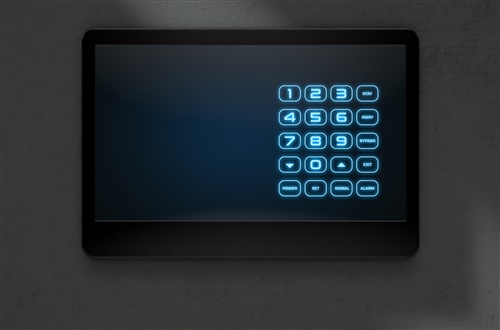SSZT915 october 2017 MSP430FR2633
Want to have a sleek and eye-catching user interface design? Transparent capacitive-touch technology can help you by making the sensors invisible. Imaging placing your touch sensors over backlit keys or liquid crystal displays (LCDs) without using an expensive full-function touch-screen solution.
Such applications usually require an optically transparent capacitive sensor, and most sensors of this type are built using indium tin oxide (ITO), a transparent conductive material sputtered onto a substrate such as glass or plastic. However, a transparent touch sensor is just one piece of the puzzle. What’s more important is a capacitive touch controller that has both all-around robustness and sensitivity.

While transparent touch sensors enable you create innovative user interfaces, there are issues associated with manufacturing cost, development time, environmental durability, system reliability and power consumption. If you’re unfamiliar with touch sensor design, these challenges can be difficult to understand and implement. A specialized, easy-to-use capacitive touch front end on a powerful yet low-power microcontroller (MCU) is likely a must. The MSP430FR2633 MCU family featuring TI’s CapTIvate™ capacitive touch sensing technology are capable of providing all of the benefits of capacitive touch technology without the complications or cost of a full touch-screen solution.
If you do not have a strong background in firmware development but want to replace mechanical buttons with capacitive touch buttons on your display, using a touch screen with full functionality requires extra software development to communicate with the touch controller, obtain the coordinates and decode them to specific, touchable areas on the screen. Using an MSP430 CapTIvate MCU, you can – regardless of your firmware development skill levels –quickly create capacitive-touch solutions with minimal effort, significantly shortening product development time. The CapTIvate Design Center resource includes graphical user interface (GUI)-based sensor design software that provides real-time debugging and tuning capability and generates source code with one button click.
Besides powerful design tools and resources, the MSP430 CapTIvate MCU family has some great features that truly help improve capacitive touch-sensing performance. One specific challenge with ITO sensing material is its high impedance compared to copper. CapTIvate technology is able to control the frequency of the sensor charge transfer process to ensure that a high-impedance ITO capacitive sensor is fully charged and has enough time to transfer the charges. Another benefit is the flexibility gained through support for combined sensor implementations like self-mode and mutual mode, as well as different sensor functions like sliders, buttons and proximity sensing.
System reliability is an essential requirement for touch user-interface applications, and transparent capacitive touch-sensing interfaces are inherently susceptible to noise coming from different sources, such as switching light-emitting diodes (LEDs), radios, switch-mode power supplies and motors. Mitigating the effects of these noise sources poses serious challenges. The MSP430 MCU with CapTIvate technology ensures excellent noise immunity through a combination of low-noise hardware design, signal-processing algorithms and noise-avoidance techniques.
So that your product will last for a long time without users having to charge their device or change the batteries, the touch controller needs to achieve the lowest power consumption possible, and provide a wake-up mechanism to reduce overall system power by keeping other components in sleep mode until triggered by a touch or proximity event. CapTIvate technology is designed to overcome power-consumption challenges by having the finite state machine autonomously monitor the sensors while the system’s central processing unit (CPU) is in deep sleep mode. The MSP430 platform MCU already has a reputation as one of the lowest-power embedded MCUs available. By combining CapTIvate technology and the MSP430 platform, a four-sensor touch system only consumes 0.9μA per sensor, which means that the system can operate off of a coin-cell battery for more than six years.
A fully functioning touch screen is not always the best solution for your product. A reliable transparent capacitive touch-sensing solution can help you save on design costs and development time, while unlocking new features to differentiate your product.
Additional Resources:
- Read our white paper about how Take your HMI design to the next level with transparent capacitive-touch technology.
- Order the MSP430 CapTIvate™ MCU Development Kit (MSP-CAPT-FR2633).
- Explore the CapTIvate Technology guide.